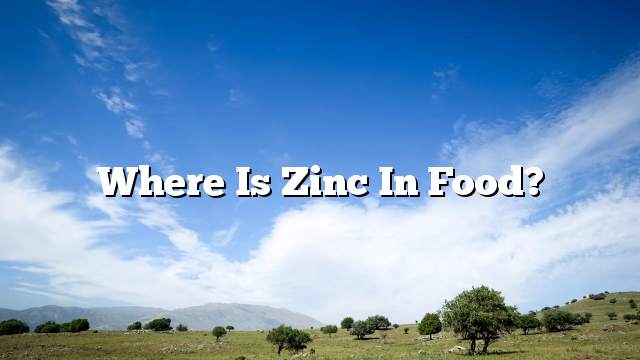Zinc
Zinc is one of the most important mineral elements needed by the body in small quantities. It is one of the minerals that are not stored in the body and food is the main source. The amount needed by men per day is 11 mg, while women need 8 mg daily. Although the body needs zinc in small amounts, it plays an important role in the work of more than 100 enzymes, in addition to its prominent role in the production of proteins and nucleic acids (English: As well as its role in the treatment of certain diseases that affect the reproductive system, such as infertility and erectile dysfunction. It also plays a role in the treatment and prevention of many different conditions, including:
- Growth stops in children.
- Acute diarrhea especially in children.
- Slow wound healing.
- Alzheimer’s.
- Weakness of taste (Hypogeusia).
- Colds.
- Malaria and other diseases caused by pathogenic parasites.
- Ulcerative colitis.
- Down’s syndrome.
- Peptic ulcers.
- Hair loss and skin problems.
- Eating disorders such as anorexia nervosa.
- Attention deficit disorder problems with hyperactivity.
Sources of zinc in food
Zinc is found in animal protein foods in large concentrations. The food protein contained in these foods increases the zinc content in it and increases its bioavailability. As the protein content increases, the zinc absorption of food increases in a way that the body can easily handle. Absorption and utilization by different body organs so as to achieve the most desired, and the most important of these sources of food:
| Type | Examples |
|---|---|
| sea food | Oyster, as it leads the list of foods rich in zinc, as every 85 grams of oysters contains more than 5 mg of zinc. |
| Red meat | Red beef and liver. |
| White meat | Turkey, which is similar to chicken in containing zinc, although chicken contains good proportions of zinc. |
| eggs | Egg yolk contains zinc unlike white. |
| Milk and dairy products | Low-fat dry milk, cheddar cheese. |
It is worth mentioning that zinc is not limited to animal sources only, as there are many options of plant sources, there are many varieties of plants containing zinc in quantities appropriate to the needs of the body different and the most important of these sources:
| Type | Examples |
|---|---|
| Nuts | Walnuts, almonds, hazelnuts, and peanuts. |
| Cereals and pulses | Sesame, lentils, wheat bran, and wheat germ. |
| Vegetables | Potatoes, parsley, peas, and beans. |
Legumes and rice are good sources of zinc, but because they contain Phytates, which have a negative effect on zinc absorption, their bioavailability is low. Phytates form powerful and insoluble compounds with zinc, and there are no special enzymes to metabolize these compounds In the gastrointestinal tract these compounds are released with stool.
Age groups that are increasingly in need of zinc
The needs of the infant for zinc differ from the needs of the child in the school stage, and it is necessary to pay attention to the nutritional needs required by the body to keep pace with natural growth and development according to the age and physiological stages. The most important of these categories are:
- Infants and children: Children are more likely to need zinc during the growth phase, as each increase in growth is offset by an increase in nutritional needs, including zinc.
- Teenage: The body moves through adolescence from childhood to adulthood, and the body’s zinc requirements often peak during this journey.
- Pregnant and lactating women: The increased nutritional requirements during pregnancy and lactation expose women to the risk of zinc deficiency, especially during the lactation phase. It is worth noting that the physiological changes that occur at this stage increase zinc uptake to try to meet the body’s need.
- Elderly: Dietary surveys indicate that elderly zinc intake is often inadequate, with low consumption of zinc-rich foods such as red meat, as well as reduced zinc uptake associated with aging.
Signs and symptoms of zinc deficiency
There are many different body systems that are affected by zinc deficiency such as the central nervous system, digestive system, immunity, skin, etc. Zinc must be given importance in the pattern of food, and focus on getting it from To avoid the health damage caused by the deficiency in the body, and signs and symptoms indicating the lack of zinc levels in the body include:
- Slow growth in children.
- Severe diarrhea especially in children.
- Decreased nervous and psychological performance in children.
- Hair loss or baldness.
- Depression and Emotional Disorders.
- Skin diseases such as eczema around the mouth area, the nasopharyngeal region, and the fingers of the hands and feet.
- Poor appetite.
- Weight loss.
- Hypothyroidism.
- Weak taste.
- Night blindness.
- Delayed wound healing.
- High levels of ammonia in the blood.
- Increased likelihood of pneumonia
